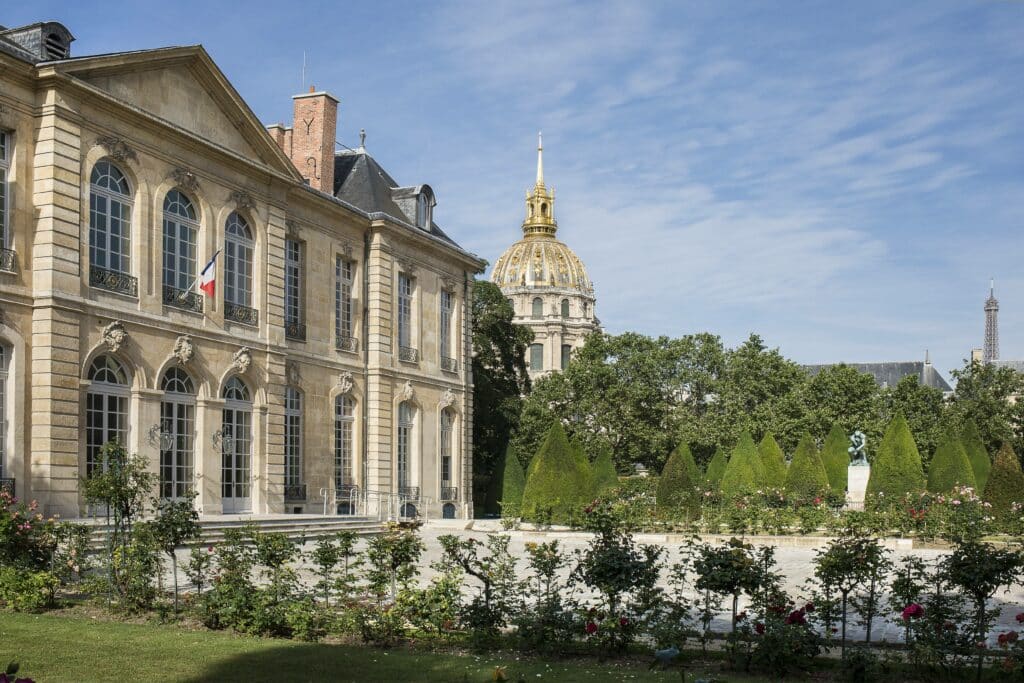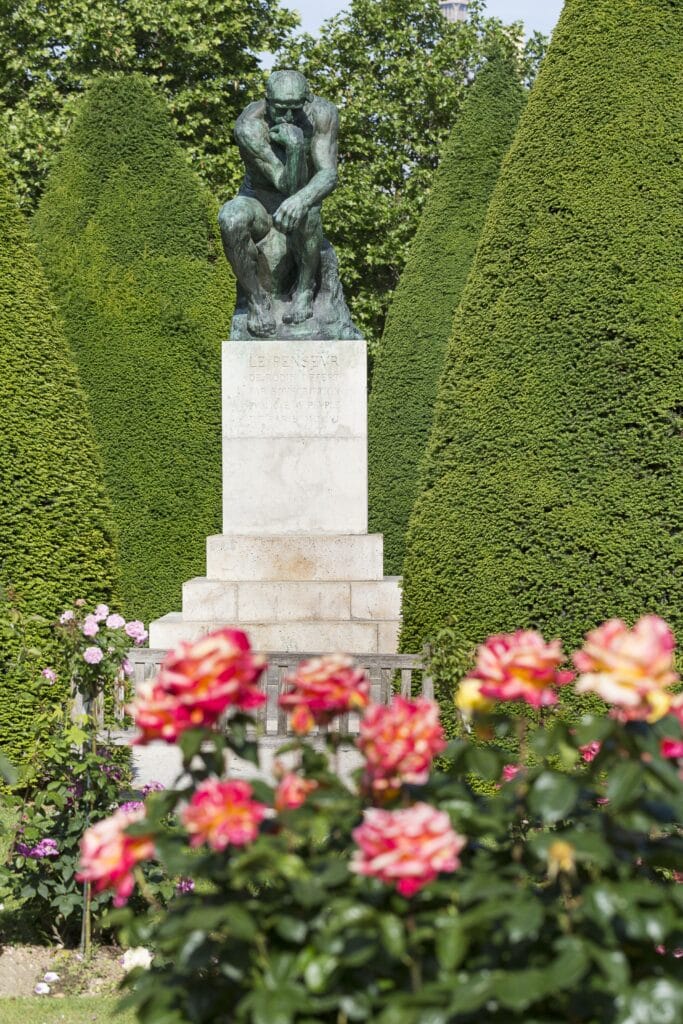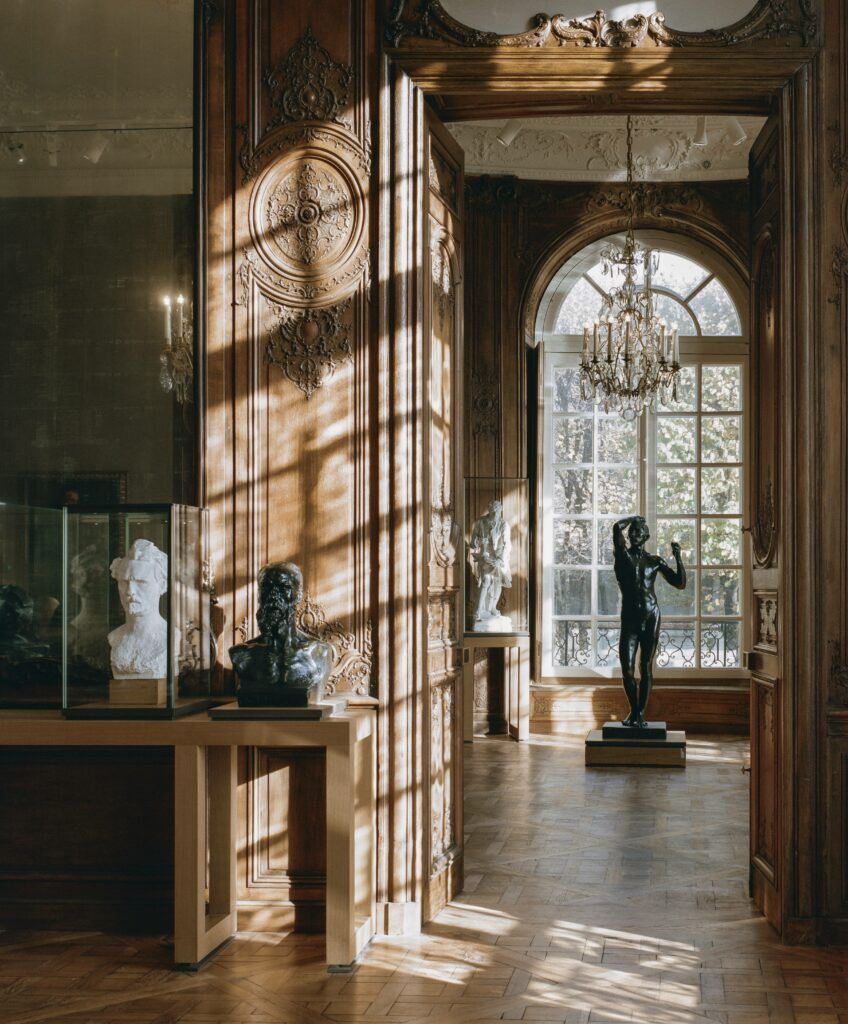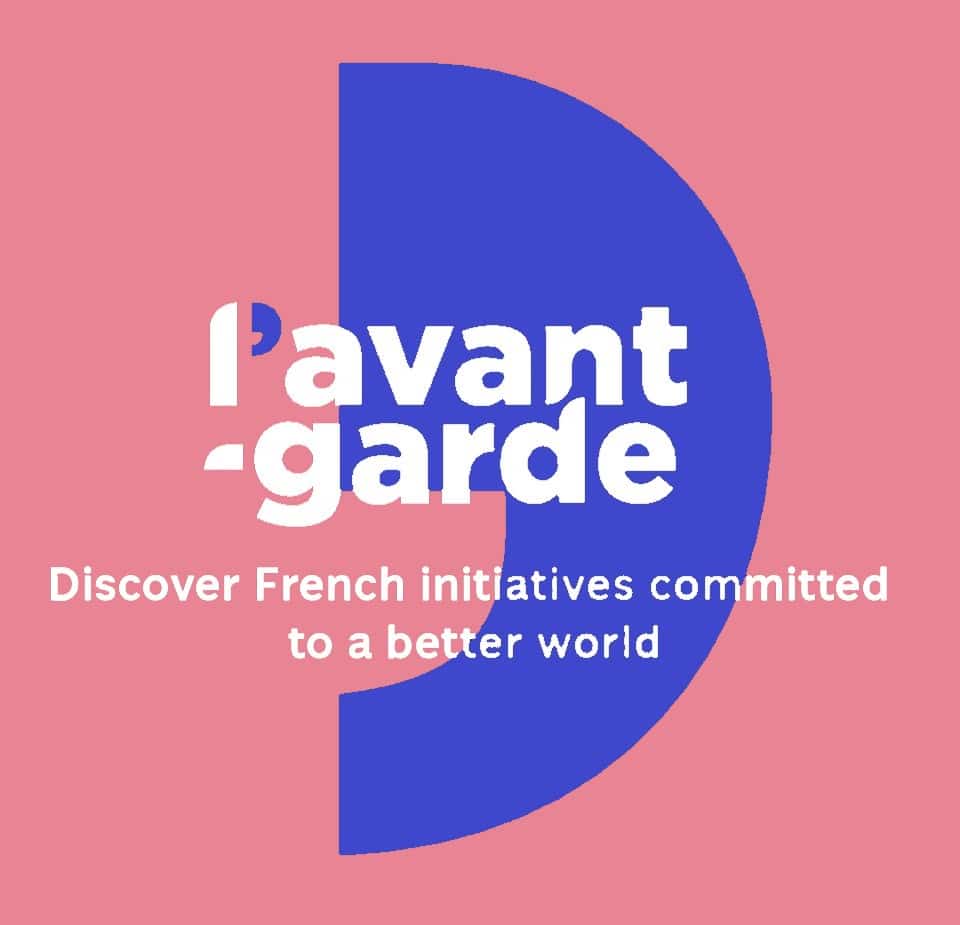
Rodin’s Ties to the United States
Rodin’s ties to the United States first formed in 1876 when he sent eight works to the Universal Exhibition in Philadelphia. In 1893, his work entered an American museum for the first time when collector Samuel P. Avery donated the bronze bust of St. John the Baptist to the Metropolitan Museum of Art. Thanks to the efforts of various collectors, over the years more sculptures began to be featured in the Metropolitan Museum of Art, such as Orpheus and Euridyce and Shadow. In 1916, Rodin donated all of his works and possessions to the French estate, stating that the Hôtel Biron should become a museum. In August of 1919, his desires came to fruition when Musée Rodin opened its doors.
“After Rodin’s death in 1917, it was thanks to Musée Rodin’s policy of disseminating Rodin’s work, the admiration of younger sculptors and the passion of collectors and critics that Rodin’s image took such a strong hold in the United States. The policy of dissemination was made possible by the donation that Rodin made to the French state in 1916. In fact, by donating the suite rights, he enabled the museum to secure its funding by publishing and marketing works made in the original molds,” mentioned Communications, Audience, and Sponsorship Manager, Myriam Goguey. “Thanks to donations from numerous collector’s, Rodin’s work is very well represented in museum collections in the United States. Even today, Americans are the most represented nation among visitors to Musée Rodin (25%),” continued Goguey. In the 1920s, Jules Mastbaum created the Rodin Museum in Philadelphia with a collection of more than 150 works by the artist in bronze, marble, and plaster. From the 50s and 60s, Gerald B. Cantor and his wife Iris acquired more than 700 works by Rodin, making him the world’s leading private collector of Rodin’s works. He has donated more than 450 works to over 70 museums around the world. Today, his sculptures are distributed throughout 21 museums in the United States, including The Museum of Fine Arts in Boston, Massachusetts, The MOMA Brooklyn Museum in New York, New York, and the Rodin Museum in Philadelphia, Pennsylvania.

The Sculpture Garden, Hôtel Biron, and Rodin’s House
The museum is made up of three different parts, with each offering a different setting. Hôtel Biron is an eighteenth-century mansion with Parisian rococo architecture that houses a chronological and thematic display in eighteen rooms. “The charm and beauty of the setting―the quality of the architecture, the antique wood trim in the rotundas, the natural light that floods the rooms― enhance the visitor experience. The presentation includes the plaster models that were part of Rodin’s creative process, helping to convey an understanding of the way he worked,” added Goguey. Outside, the sculpture garden offers a haven of peace. Upon entering the garden, the Thinker greets visitors. Further within the sculpture garden lies The Gates of Hell. Nearby lies a pathway of sculptures, including The Burghers of Calais, The Monument to Balzac, and Les Invalides. The garden displays the sculptures in a different light, while illustrating the subtle harmony between nature and sculpture. Lastly, Rodin’s house in Meudon, The Villa des Brillants, is a more intimate setting that has preserved the atmosphere of an artist’s home. The beautiful park with its sloping lawns is also a memorial site: it is where Rodin and his wife Rose Beuret are buried.

New Exhibitions, Activities, and Research!
Musée Rodin has much to offer to visitors, such as new exhibitions and educational activities.
Enhancing the collections
In 2023, thanks to support from DIOR, Musée Rodin acquired Rodin’s first sculpture modeled: Buste de jeune femme aux roses dans les cheveux. This acquisition reveals the sculptor’s creative process, considering it is made out of clay. This work shows how he began his journey as an artist.
Exhibitions, rediscovering Rodin’s work
Every year in autumn, the Musée Rodin organizes an exhibition which invites a contemporary artist or sheds light on a specific aspect of Rodin’s work. From 17 October 2023 to 03 March 2024, British artist Antony Gormley was welcomed into the museum with the exhibition Critical Mass. According to Goguey, “Key works from across Gormley’s career will enter into dialogue with Rodin’s own sculptures, inviting visitors to reflect on the two sculptors and their shared investment in asking what the body offers sculpture as a subject, object, and reflexive tool.”
Educational activities, making culture accessible
The Musée Rodin has paid particular attention to ensuring that its collections and offerings are accessible to people who are far removed from cultural institutions. A team of 4 are dedicated to implementing all educational projects. The Atelier Rodin is at the heart of the museum’s cultural outreach policy,which will be introduced in 2024 from April to August. Families can explore this space, which is dedicated to the discovery of art and sculpture by practice. All are invited to learn more about the process of creating a sculpture and experience a creative challenge. Tools and resources are available for modeling, assembling, posing, and drawing. This is an experience everyone is guaranteed to enjoy!
Research, renewing our knowledge on Rodin’s life and art
The Musée Rodin Research Center holds the artist’s donations, which provides researchers with a plethora of information that allows for a deeper understanding of the sculptor and his life and work. Additionally, the center holds a vast array of information, including the institution’s archives and documents. Another purpose of the research center is to collaborate with French and international partner institutions on projects. This forsters interdisciplinarity and allows for cross-referencing. “The Musée Rodin Research Center is a place of study, inspiration and exchange between museums, universities, worldwide institutions and researchers in a wide range of scientific fields,” concluded Goguey.
Partnering with Friends of Fondation de France
Thanks to donors, Musée Rodin can remain self-funded, preserve and restore his works, acquire art, conduct valuable research pertaining to the museum’s collection, and provide educational resources. If you have an interest in the preservation of arts and culture, consider making a donation to Musée Rodin.




